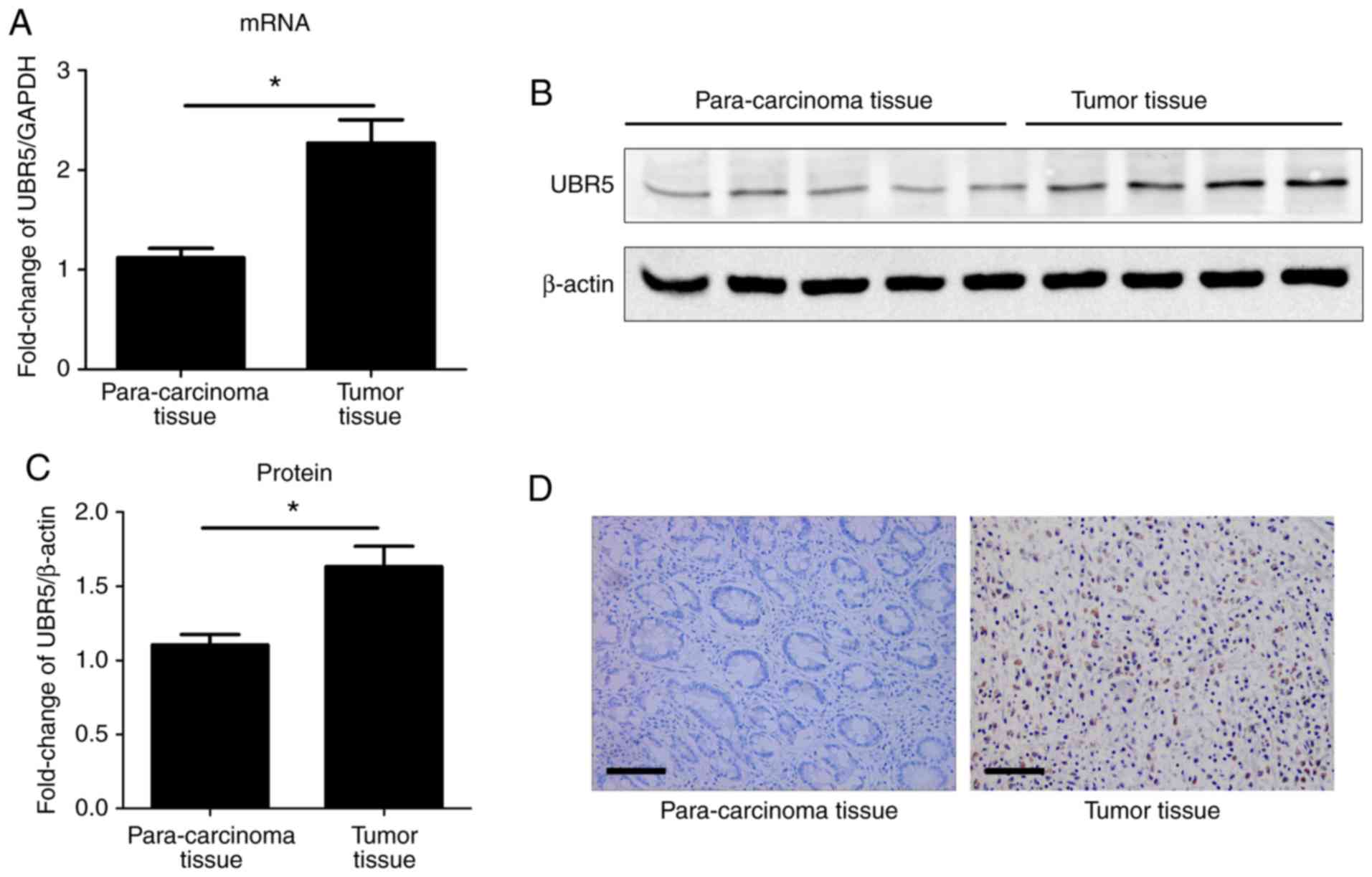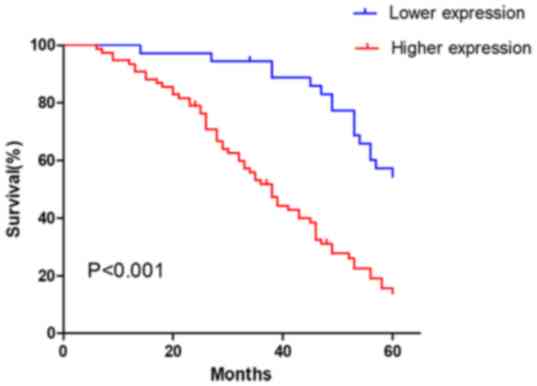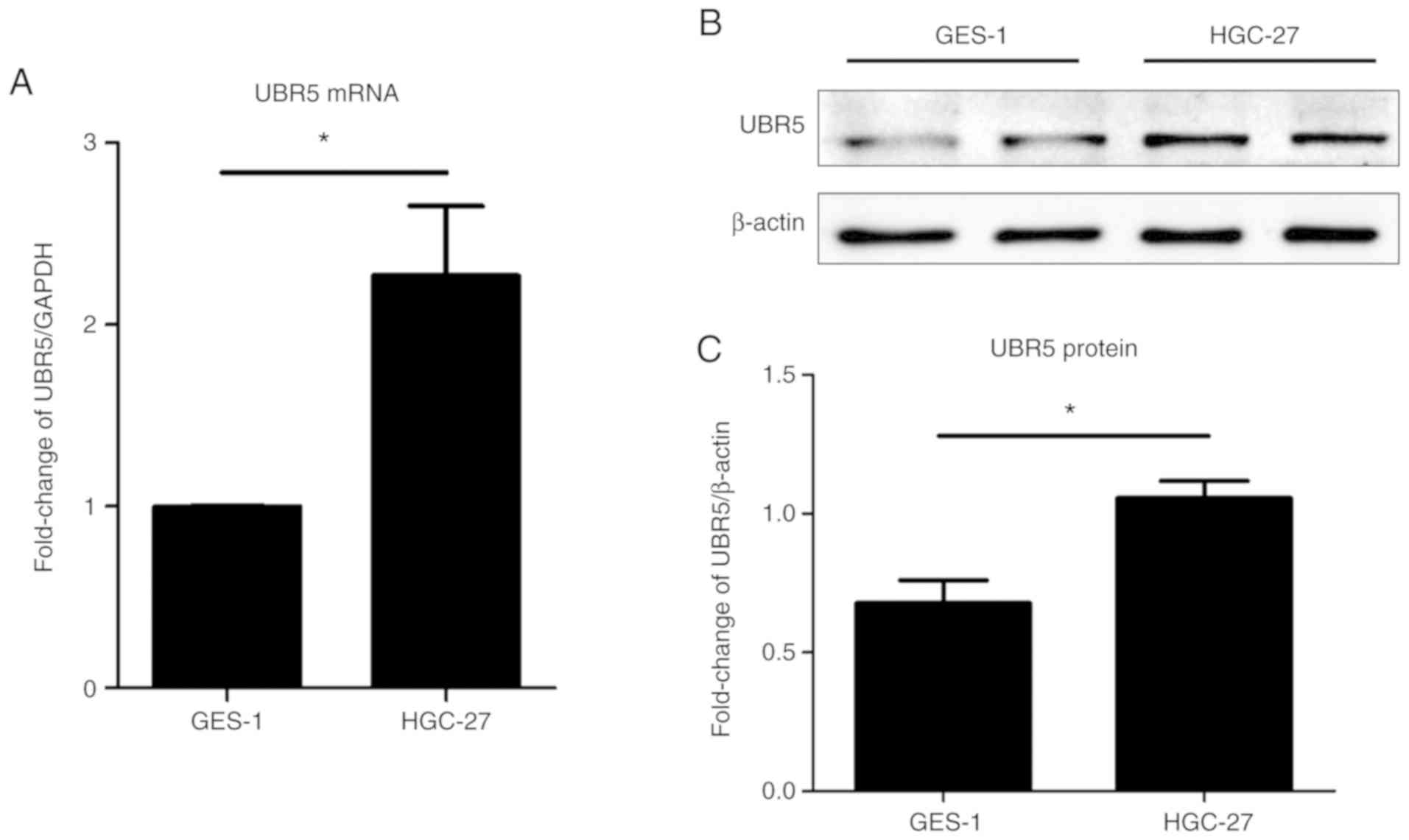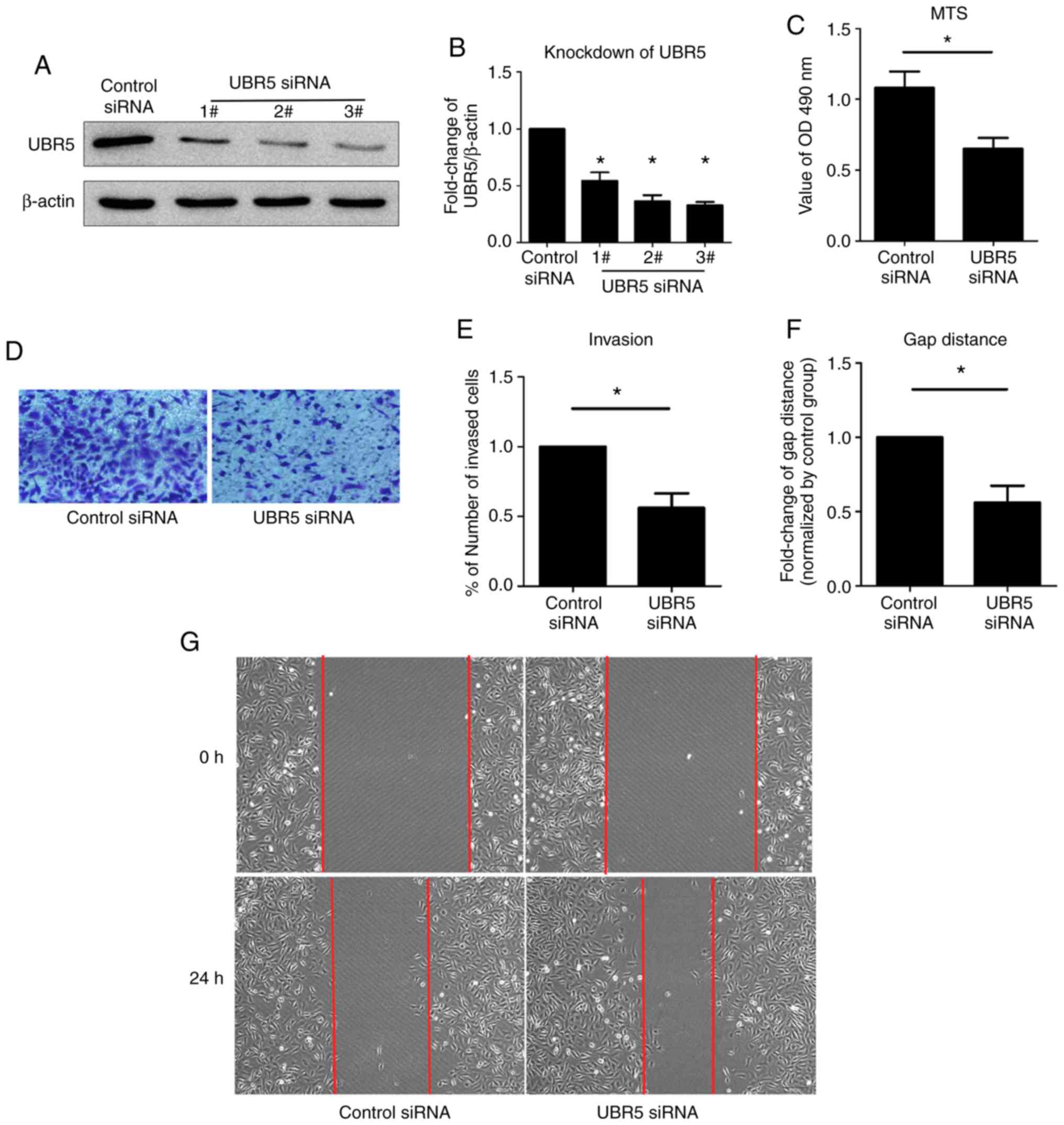|
1
|
Global Burden of Disease Cancer
Collaboration. Fitzmaurice C, Abate D, Abbasi N, Abbastabar H,
Abd-Allah F, Abdel-Rahman O, Abdelalim A, Abdoli A, Abdollahpour I,
et al: Global, regional, and national cancer incidence, mortality,
years of life lost, years lived with disability, and
disability-adjusted life-years for 29 cancer groups, 1990 to 2017:
A systematic analysis for the global burden of disease study. JAMA
Oncol. 5:1749–1768. 2019.PubMed/NCBI View Article : Google Scholar : (Online ahead of
print).
|
|
2
|
Chen W, Zheng R, Baade PD, Zhang S, Zeng
H, Bray F, Jemal A, Yu XQ and He J: Cancer statistics in China,
2015. CA Cancer J Clin. 66:115–132. 2016.PubMed/NCBI View Article : Google Scholar
|
|
3
|
Song Z, Wu Y, Yang J, Yang D and Fang X:
Progress in the treatment of advanced gastric cancer. Tumour Biol.
39(1010428317714626)2017.PubMed/NCBI View Article : Google Scholar
|
|
4
|
Digklia A and Wagner AD: Advanced gastric
cancer: Current treatment landscape and future perspectives. World
J Gastroenterol. 22:2403–2414. 2016.PubMed/NCBI View Article : Google Scholar
|
|
5
|
Shearer RF, Iconomou M, Watts CK and
Saunders DN: Functional roles of the E3 ubiquitin ligase UBR5 in
cancer. Mol Cancer Res. 13:1523–1532. 2015.PubMed/NCBI View Article : Google Scholar
|
|
6
|
Li W, Bengtson MH, Ulbrich A, Matsuda A,
Reddy VA, Orth A, Chanda SK, Batalov S and Joazeiro CA: Genome-wide
and functional annotation of human E3 ubiquitin ligases identifies
MULAN, a mitochondrial E3 that regulates the organelle's dynamics
and signaling. PLoS One. 3(e1487)2008.PubMed/NCBI View Article : Google Scholar
|
|
7
|
Callaghan MJ, Russell AJ, Woollatt E,
Sutherland GR, Sutherland RL and Watts CK: Identification of a
human HECT family protein with homology to the Drosophila tumor
suppressor gene hyperplastic discs. Oncogene. 17:3479–3491.
1998.PubMed/NCBI View Article : Google Scholar
|
|
8
|
Henderson MJ, Russell AJ, Hird S, Muñoz M,
Clancy JL, Lehrbach GM, Calanni ST, Jans DA, Sutherland RL and
Watts CK: EDD, the human hyperplastic discs protein, has a role in
progesterone receptor coactivation and potential involvement in DNA
damage response. J Biol Chem. 277:26468–26478. 2002.PubMed/NCBI View Article : Google Scholar
|
|
9
|
Matsuura K, Huang NJ, Cocce K, Zhang L and
Kornbluth S: Downregulation of the proapoptotic protein MOAP-1 by
the UBR5 ubiquitin ligase and its role in ovarian cancer resistance
to cisplatin. Oncogene. 36:1698–1706. 2017.PubMed/NCBI View Article : Google Scholar
|
|
10
|
Scialpi F, Mellis D and Ditzel M: EDD, a
ubiquitin-protein ligase of the N-end rule pathway, associates with
spindle assembly checkpoint components and regulates the mitotic
response to nocodazole. J Biol Chem. 290:12585–12594.
2015.PubMed/NCBI View Article : Google Scholar
|
|
11
|
Cojocaru M, Bouchard A, Cloutier P, Cooper
JJ, Varzavand K, Price DH and Coulombe B: Transcription factor IIS
cooperates with the E3 ligase UBR5 to ubiquitinate the CDK9 subunit
of the positive transcription elongation factor B. J Biol Chem.
286:5012–5022. 2011.PubMed/NCBI View Article : Google Scholar
|
|
12
|
Munoz MA, Saunders DN, Henderson MJ,
Clancy JL, Russell AJ, Lehrbach G, Musgrove EA, Watts CK and
Sutherland RL: The E3 ubiquitin ligase EDD regulates S-phase and
G(2)/M DNA damage checkpoints. Cell Cycle. 6:3070–3077.
2007.PubMed/NCBI View Article : Google Scholar
|
|
13
|
McDonald WJ, Sangster SM, Moffat LD,
Henderson MJ and Too CK: alpha4 phosphoprotein interacts with EDD
E3 ubiquitin ligase and poly(A)-binding protein. J Cell Biochem.
110:1123–1129. 2010.PubMed/NCBI View Article : Google Scholar
|
|
14
|
Zhang Z, Zheng X, Li J, Duan J, Cui L,
Yang L, Zhang L, Zhang Q and Wang X: Overexpression of UBR5
promotes tumor growth in gallbladder cancer via PTEN/PI3K/Akt
signal pathway. J Cell Biochem, Feb 18, 2019 (Online ahead of
print).
|
|
15
|
Meissner B, Kridel R, Lim RS, Rogic S, Tse
K, Scott DW, Moore R, Mungall AJ, Marra AM, Connors JM, et al: The
E3 ubiquitin ligase UBR5 is recurrently mutated in mantle cell
lymphoma. Blood. 121:3161–3164. 2013.PubMed/NCBI View Article : Google Scholar
|
|
16
|
Clancy JL, Henderson MJ, Russell AJ,
Anderson DW, Bova RJ, Campbell IG, Choong DY, Macdonald GA, Mann
GJ, Nolan T, et al: EDD, the human orthologue of the hyperplastic
discs tumour suppressor gene, is amplified and overexpressed in
cancer. Oncogene. 22:5070–5081. 2003.PubMed/NCBI View Article : Google Scholar
|
|
17
|
O'Brien PM, Davies MJ, Scurry JP, Smith
AN, Barton CA, Henderson MJ, Saunders DN, Gloss BS, Patterson KI,
Clancy JL, et al: The E3 ubiquitin ligase EDD is an adverse
prognostic factor for serous epithelial ovarian cancer and
modulates cisplatin resistance in vitro. Br J Cancer. 98:1085–1093.
2008.PubMed/NCBI View Article : Google Scholar
|
|
18
|
Bradley A, Zheng H, Ziebarth A, Sakati W,
Branham-O'Connor M, Blumer JB, Liu Y, Kistner-Griffin E,
Rodriguez-Aguayo C, Lopez-Berestein G, et al: EDD enhances cell
survival and cisplatin resistance and is a therapeutic target for
epithelial ovarian cancer. Carcinogenesis. 35:1100–1109.
2014.PubMed/NCBI View Article : Google Scholar
|
|
19
|
Eblen ST and Bradley A: MOAP-1, UBR5 and
cisplatin resistance in ovarian cancer. Transl Cancer Res. 6 (Suppl
1):S18–S21. 2017.PubMed/NCBI View Article : Google Scholar
|
|
20
|
Yang M, Jiang N, Cao QW, Ma MQ and Sun Q:
The E3 ligase UBR5 regulates gastric cancer cell growth by
destabilizing the tumor suppressor GKN1. Biochem Biophys Res
Commun. 478:1624–1629. 2016.PubMed/NCBI View Article : Google Scholar
|
|
21
|
Akagi T, Yoshino T, Motoi M, Takata H,
Yano S, Miyoshi I, Oka T and Ohtsuki Y: Isolation of
virus-producing transformants from human gastric cancer cell line,
HGC-27, infected with human T-cell leukemia virus type I. Jpn J
Cancer Res. 79:836–842. 1988.PubMed/NCBI View Article : Google Scholar
|
|
22
|
Akagi T and Kimoto T: Human cell line
(HGC-27) derived from the metastatic lymph node of gastric cancer.
Acta Med Okayama. 30:215–219. 1976.PubMed/NCBI
|
|
23
|
Ding X, Zhu J and Wang X, Zhou W, Wu K,
Zhou Z, Zhou K, Wu D, Jiao J, Xia Y and Wang X: Different
cytotoxicity of disinfection by-product haloacetamides on two
exposure pathway-related cell lines: Human gastric epithelial cell
line GES-1 and immortalized human keratinocyte cell line HaCaT. Sci
Total Environ. 692:1267–1275. 2019.PubMed/NCBI View Article : Google Scholar
|
|
24
|
Ke Y, Ning T and Wang B: Establishment and
characterization of a SV40 transformed human fetal gastric
epithelial cell line-GES-1. Zhonghua Zhong Liu Za Zhi. 16:7–10.
1994.PubMed/NCBI(In Chinese).
|
|
25
|
Livak KJ and Schmittgen TD: Analysis of
relative gene expression data using real-time quantitative PCR and
the 2(-Delta Delta C(T)) method. Methods. 25:402–408.
2001.PubMed/NCBI View Article : Google Scholar
|
|
26
|
Agnes A, Biondi A, Laurino A, Persiani R
and D'Ugo D: Global updates in the treatment of gastric cancer: A
systematic review. Part 1: Staging, classification and surgical
treatment. Updates Surg. 72:341–353. 2020.PubMed/NCBI View Article : Google Scholar
|
|
27
|
Socovich AM and Naba A: The cancer
matrisome: From comprehensive characterization to biomarker
discovery. Semin Cell Dev Biol. 89:157–166. 2019.PubMed/NCBI View Article : Google Scholar
|
|
28
|
Flack JE, Mieszczanek J, Novcic N and
Bienz M: Wnt-dependent inactivation of the groucho/TLE co-repressor
by the HECT E3 ubiquitin ligase Hyd/UBR5. Mol Cell. 67:181–193.e5.
2017.PubMed/NCBI View Article : Google Scholar
|
|
29
|
Li CG, Mahon C, Sweeney NM, Verschueren E,
Kantamani V, Li D, Hennigs JK, Marciano DP, Diebold I, Abu-Halawa
O, et al: PPARγ interaction with UBR5/ATMIN promotes DNA repair to
maintain endothelial homeostasis. Cell Rep. 26:1333–1343.e7.
2019.PubMed/NCBI View Article : Google Scholar
|
|
30
|
Lee YR, Chen M and Pandolfi PP: The
functions and regulation of the PTEN tumour suppressor: New modes
and prospects. Nat Rev Mol Cell Biol. 19:547–562. 2018.PubMed/NCBI View Article : Google Scholar
|


















